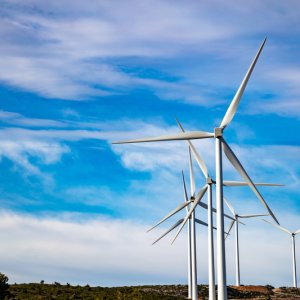
Mexico Presents Answers for USMCA Dispute Questions
 By Perla Velasco | Journalist & Industry Analyst -
Thu, 12/15/2022 - 08:00
By Perla Velasco | Journalist & Industry Analyst -
Thu, 12/15/2022 - 08:00
Despite the pressure from Canada and the US regarding the energy dispute, Mexico is not drastically altering its energy policy, although the country’s government presented a plan to solve the spat. Mexico ranked 33rd on the 60th EY’s Renewable Energy Country Attractiveness Index (RECAI), dropping one spot since the last RECAI of May 2022. Meanwhile, SENER reported on natural gas production and Rocío Nahle, Mexico’s Minister of Energy, presented an analysis at the Senate about the energy ministry’s activities in 2022. Nevertheless, the private sector remains firm on its energy transition goals.
Ready for more? Here is the weekly roundup!
Ministry of Economy Presents Plan to Work Out Energy Dispute
The Mexican Minister of Economy, Raquel Buenrostro, presented a plan to resolve the energy policy disputes under the USMCA with the US and Canada. The plan consists of two points. The first proposes to gather a technical task force to clear doubts and explain the decisions that have been taken for Mexico’s energy sector. Secondly, the plan recommends establishing working groups between December 2022 and January 2023 to address different issues regarding the dispute. The ministry underlined the importance of speeding up the consultation period to provide assurance to investors who want to invest in Mexico.
Mexico 34th of 40 Most Attractive Renewables Investment Countries
Mexico scored 54.6 points, dropping one spot since the last RECAI of May 2022. The Top 3 comprises the US with 73.3 points, China with 72.2 points and Germany with 71.7 points. Mexico reached its highest scores in the PV solar energy category with 47.2 points, followed by onshore wind with 41.8 and geothermal energy with 39.5. On the downside, Mexico’s less attractive renewable energy technologies for investment were concentrated solar with 24.3 points, offshore wind energy with 21.2 points and wave energy with 18.9 points.
SENER Presents 2022 Analysis at the Senate
Rocío Nahle presented the Senate with a report of the energy ministry’s activities in 2022. The report covered Dos Bocas’ advancements, growing gas infrastructure, refining, accountability on electricity access and renewable energy. Nahle reported that security processes were being carried out at Dos Bocas before it could go into operation. SENER also reported that the capacity to interconnect and distribute gas increased, widening CFE’s ability to sell its surplus supply to the industrial sector. Furthermore, SENER reported that 99.25 of the population had access to electricity. This year, 29 percent of energy was generated by clean sources.
SENER Reports 2022’s Natural Gas Production, Imports
SENER reported that natural gas consumption has increased steadily over the past years while production has been declining since 2015. Mexico reached its lowest production levels in 2021. In 2022, the country saw a slight increase compared to decreases. Nevertheless, increased demand led to further imports. Since the implementation of the Sur de Texas - Tuxpan pipeline in September 2019, Mexico’s liquefied natural gas (LNG) imports gradually decreased.
Hydroelectric Power Essential for Energy Transition: CONAGUA
According to Humberto Marengo, Deputy Technical Director, the National Water Commission (CONAGUA), hydropower plants have one of the highest returns on investment among power sources, and a project’s CO2 emissions are minimal. In Mexico, hydroelectric power leads clean electricity production. CFE’s priority projects for clean energy production between 2022 - 2027 include 9 projects for the upgrading and modernization of hydropower plants and 4 projects for the upgrading and modernization of mini-hydropower plants.
Wind Sector Wants to Provide 37 Percent of Clean Power Goals
Leopoldo Rodríguez, President, the Mexican Wind Energy Association (AMDEE) stated that wind power remains stuck due to a lack of permits. He stressed that the private energy sector is willing to contribute about 37 percent to Mexico’s clean power production goals set at COP27, provided that some market conditions are met. The regulatory blockage by the federal government has also affected other projects already in an advanced stage, which would add an extra 5GW of renewable power capacity.
Energy Policy Hinders Mexico’s Opportunity for Semiconductors
In September 2022, US Secretary of Commerce Gina Raimondo announced that the CHIPS and Science Act would create important opportunities for the Mexican industrial sector. The act aims to strengthen domestic semiconductor manufacturing, design and research, fortify the economy and national security, and reinforce the US’ chip supply chains. However, Mexico’s over-reliance on fossil fuels and lack of financial incentives in energy policy could jeopardize this growth.
NeolSyM, CITRUS, Absolicon Decarbonize Pharmaceutical Industry
NeolSyM, a Neolpharma Group company, and CITRUS have signed an agreement for the installation of a demo plant at its facilities in Ecatepec de Morelos, the State of Mexico. The initial installation is expected to commence in 2023 using the patented Absolicon T160 technology, with an operational temperature of up to 160°C heat and 8 bar steam. This important milestone confirms that decarbonization is profitable and achievable.
















